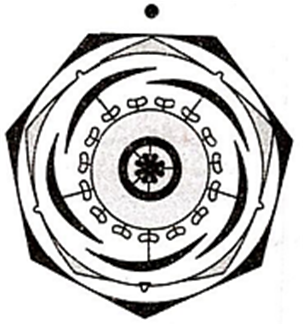 Multiple Choice Questions
Multiple Choice QuestionsThe statement given below are the deficiency symptoms of a certain element. Identify the element with the help of options that follow.
I. Stunted growth
II. Tissue necrosis
III. Curling appear first in young leaves
IV. Premature flower abscission
Choose the correct option
magnesium
boron
calcium
nitrogen
C.
calcium
Calcium deficiency symptoms appear initially as localized tissue necrosis leading to stunted plant growth, necrotic leaf margins on young leaves or curling of the leaves, and eventual death of terminal buds and root tips. The major function of this element are
(i) selective permeability of cell membrane
(ii) organisation of mitotic spindle
(iii) metabolism
(iv) meristematic activity
In complete oxidation of glucose, ATP molecules are formed from ADP. Which among the following stage yields the maximum amount of ATP?
Glycolsis
Kreb's cycle
Electron transport chain
Conversion of pyruvic acid to acetyl Co-A
The binomial name in which names of genus and species are same is referred to as
binomial nomenclature
tautonym
cladistics
polytypic
Read the following statements with respects to rate of transpiration.
I. In dry atmosphere, the relative humidity is low so, the rate of transpiration increases.
II. Slow breeze promotes the rate of transpiration.
III. ABA promotes transpiration.
IV. A high salt concentration in soil water increases transpiration.
Choose the incorrect options.
I and II
II and III
III and IV
I and IV
Choose the correct option depicting the floral formula of the diagram given below

BrP3 + 3 A3 + 3 (3)
BrEpi5 - 7 K(5) C5 A() (5)
Ebr K2 + 2 C4 A2 + 4 (2)
% K5 C5 A7 + 3 (1)
If there is more than one tunica layer in stem apex, which among the following is most likely to happen?
All the layers will develop into epidermal cells
Only the outer layer will develop into epidermal cells
All the layers will develop into cortex
Inner layer develops into cortex
Consider the following statements about basis of classification.
I. Amphibians are classified on the basis of their habitat.
II. Reptiles are classified on the basis of the nature of their skulls.
III. Birds are classified on the basis of their bones.
IV. Mammals are classified on the basis of their mode of reproduction.
Choose the correct option
Only I
I and II
Only II
II and IV
